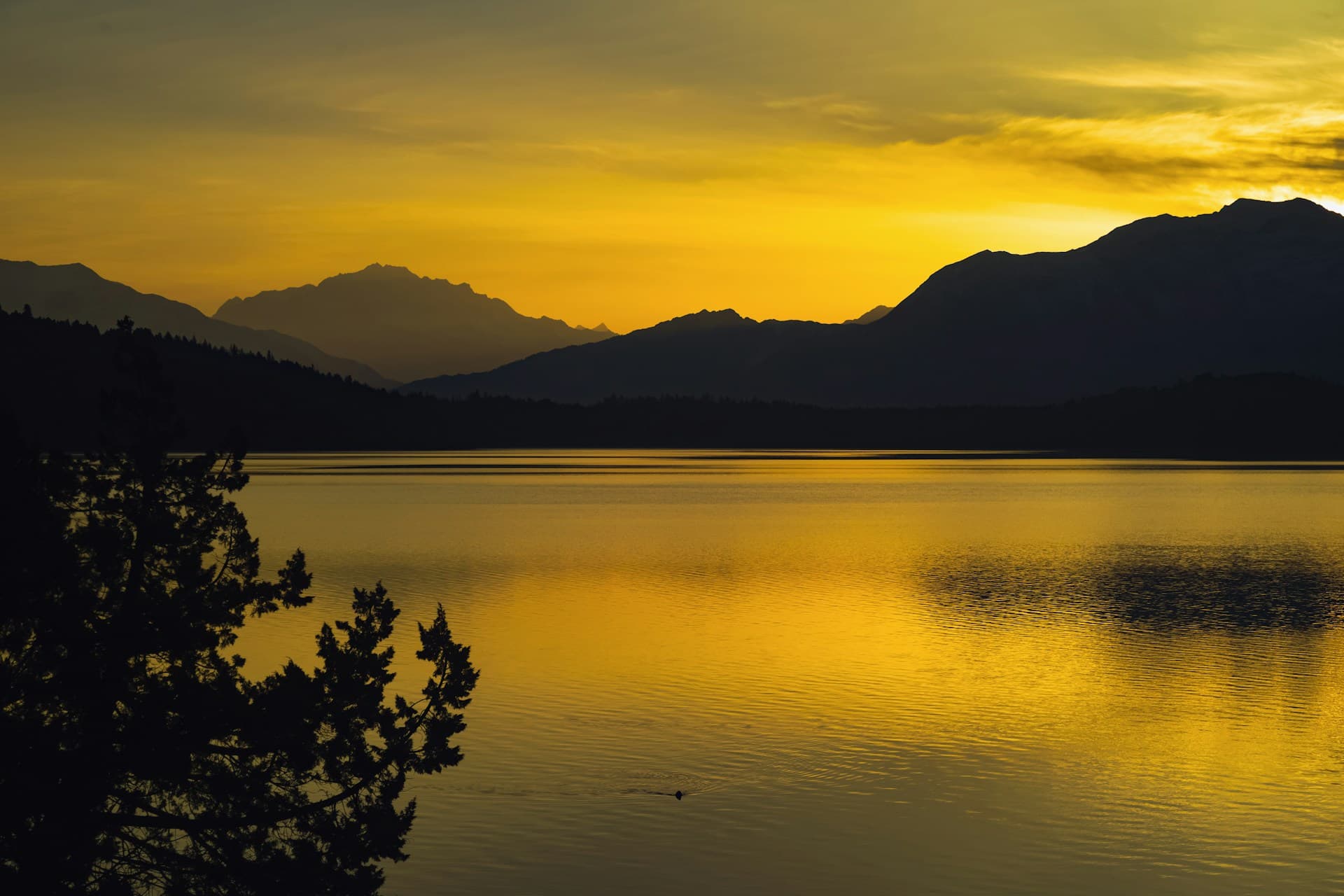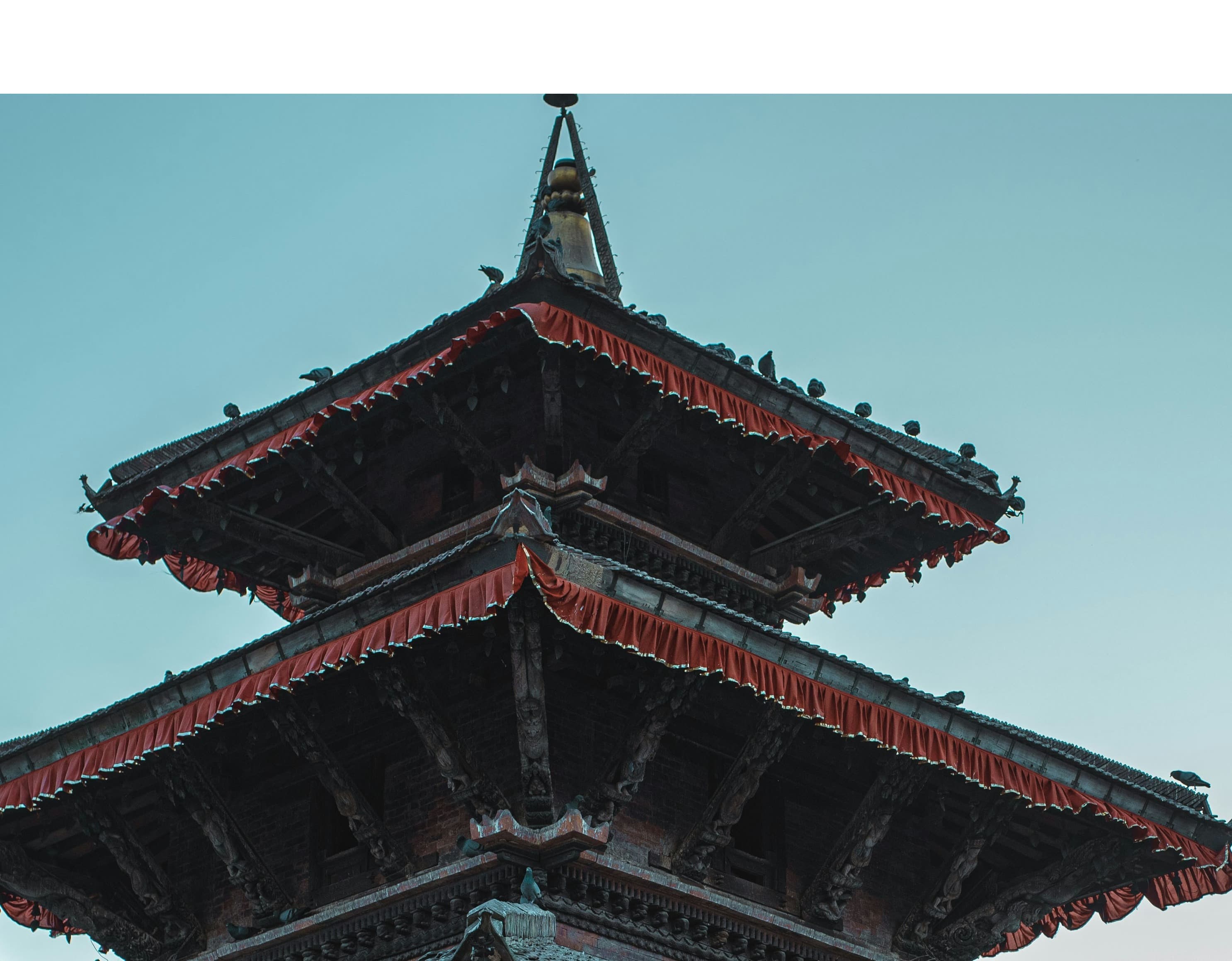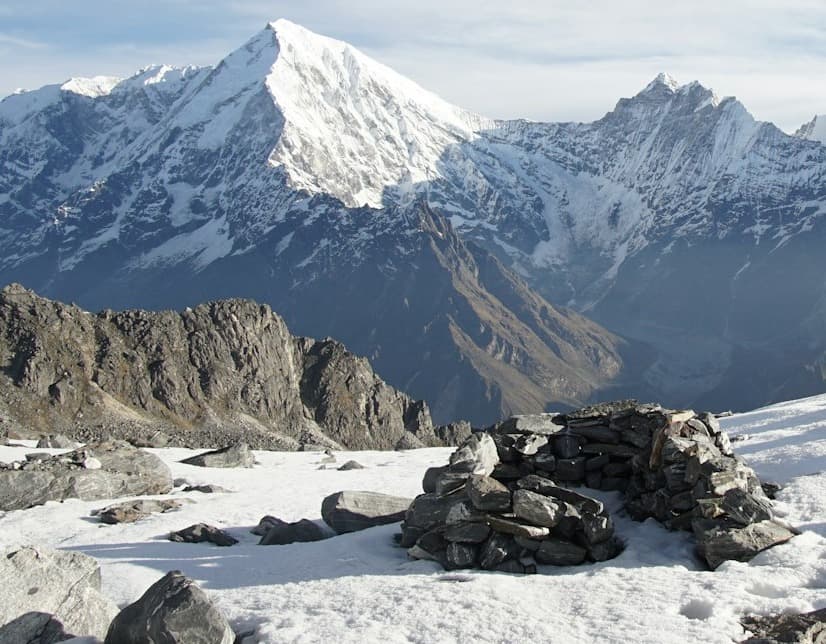Access to Rara Lake involves a scenic yet challenging trek that rewards visitors with spectacular views and a tranquil experience away from the bustling tourist trails. The region is known for its rich biodiversity, including several species of flora and fauna unique to the area. Birdwatchers and wildlife enthusiasts can spot the Himalayan monal, musk deer, and even the elusive snow leopard.
For those interested in eco-tourism, Rara Lake offers sustainable travel options that contribute to the conservation of its delicate ecosystem. The local community benefits from tourism, providing homestays and guiding services that enhance the visitor experience with authentic cultural insights.
.jpg)
History of Rara Lake:
Rara Lake, often dubbed the "Queen of Lakes," boasts a storied history intertwined with the local folklore and culture of Nepal's Mugu district. The lake is named after the local deity, Rara Mai, and has been a revered site for centuries. Historical records and legends speak of its importance as a spiritual and communal gathering place for local tribes. Over time, it has become a symbol of pristine natural beauty, attracting increasing attention for conservation efforts.
Features of Rara Lake:
Rara Lake is the largest lake in Nepal, known for its clear blue waters and the stunning Himalayan peaks that surround it. The lake changes color with the seasons, from deep blue to emerald green. It is situated at an altitude of about 2,990 meters, covering an area of 10.8 square kilometers. The lake is part of Rara National Park, which serves as a sanctuary for many endangered species of wildlife and plants.
Socio-cultural and Religious Values:
Rara Lake holds immense socio-cultural and religious significance for the local communities. It is a place of pilgrimage during certain festivals, including Rara-Jat, where locals partake in rituals and celebrate with traditional music and dance. The lake is also a vital source of water and a key component in the local ecosystem, supporting both the livelihoods and the spiritual practices of the people in the region. Its untouched natural beauty and sacredness foster a deep connection between the local inhabitants and their environment, emphasizing the importance of preserving such unique natural sites.
Flora and Fauna of Rara Lake:
Rara Lake, nestled within Rara National Park in Nepal, is a hotspot of biodiversity, supporting a variety of flora and fauna adapted to its alpine climate. The area around the lake is covered with coniferous forests, dominated by species such as blue pine, black juniper, West Himalayan spruce, oak, and Himalayan cypress. These forests provide a lush habitat that supports a wide range of plant species, many of which are endemic to the region.
The fauna of Rara Lake is equally diverse and includes a variety of mammals, birds, and other wildlife. Notable mammalian species found in the area include the musk deer, red panda, snow leopard, Himalayan black bear, and the rare grey wolf. The lake itself and its surrounding wetlands are crucial for birds, making it an important bird area. Bird species commonly seen include the Himalayan monal, black-necked crane, and various species of pheasants and waterfowl.
Climate of Rara Lake:
The climate in the region of Rara Lake is predominantly alpine, characterized by cool temperatures throughout the year. The lake is situated at an elevation of nearly 2,990 meters, which influences its climatic conditions significantly.
-
Winter (December to February): Winter is harsh with heavy snowfall and temperatures that can drop well below freezing, particularly during the night. The lake often freezes over during this season.
-
Spring (March to May): Spring sees a gradual warming with daytime temperatures becoming more comfortable. This season is marked by the melting of snow and a resurgence of flora and fauna. It is also an excellent time for visitors to witness the blossoming of rhododendrons and other native flowers.
-
Summer (June to August): Summer is relatively mild with moderate temperatures and occasional rainfall. This is the monsoon period when the region receives most of its precipitation, which can lead to lush landscapes but also makes trekking paths slippery and challenging.
-
Autumn (September to November): Autumn is considered the best time to visit Rara Lake due to clear skies, stable weather, and moderate temperatures. The visibility is excellent, offering breathtaking views of the lake and the surrounding snow-capped peaks.
The unique climate of Rara Lake, combined with its high altitude and isolated location, contributes to its distinct ecological zone, supporting species that are well-adapted to the environmental conditions.
Traveling from Kathmandu to Rara Lake:
-
Air Travel:
- Step 1: Fly from Kathmandu to Nepalgunj, which is one of the major cities in western Nepal. Flights between Kathmandu and Nepalgunj are frequent and take about an hour.
- Step 2: From Nepalgunj, take a second flight to Talcha Airport, which is the closest airstrip to Rara Lake. This flight takes approximately 45 minutes and offers dramatic views of the Himalayan landscape.
-
Road and Trek:
- Option 1: From Nepalgunj, you can also choose to drive to Jumla, a journey that takes about 10-12 hours. From Jumla, you embark on a two-day trek to Rara Lake, traversing beautiful landscapes and local villages.
- Option 2: Alternatively, from Talcha Airport, Rara Lake is just a 2-3 hour trek away. This is a shorter and more direct route for those who prefer less trekking.
Beautiful Parts of Rara Lake:
- The Lake Itself: The biggest attraction is Rara Lake, known for its stunning turquoise waters. The color of the lake changes with the seasons and the time of day, making it a photographer’s paradise.
- Chuchemara Hill: One of the best viewpoints is from Chuchemara Hill at 4,087 meters, where you get panoramic views of the entire lake and the surrounding forested hills.
- Murma Top: Another fantastic viewpoint is Murma Top, which offers spectacular views of the lake against the backdrop of distant snow-capped peaks.
- Wildlife Watching: The forests around the lake are home to diverse wildlife, providing excellent opportunities for spotting animals like deer, monkeys, and various bird species.
Travel Tips:
- Best Time to Visit: The best times to visit Rara Lake are during the spring (April to June) and autumn (September to November) seasons when the weather is favorable, and the skies are clear.
- Permits: Since Rara Lake is within a national park, you will need to obtain the necessary permits from the Department of National Parks and Wildlife Conservation in Kathmandu or at entry points.
- Preparation: Given the altitude and remote location, it's essential to be well-prepared with suitable gear for trekking and changes in weather.
This journey to Rara Lake is not just about reaching a destination but experiencing the diverse cultural and natural beauty of Nepal along the way.

Day to Day Program of Rara Lakh Trek:
Here's a detailed day-by-day itinerary for a 15-day trek to Rara Lake, designed to offer an immersive experience in both the breathtaking landscapes and rich cultural heritage of Nepal:
Day 01: Arrival in Kathmandu
Upon arrival at Tribhuvan International Airport, you'll be greeted and transferred to your hotel in Kathmandu. Rest and recover from your flight, preparing for the adventure ahead.
Day 02: Kathmandu Sightseeing
Enjoy a half-day sightseeing tour of Kathmandu, exploring historic and cultural landmarks like Swayambhunath Stupa and Patan Durbar Square. Return to your hotel to relax and enjoy another night in the vibrant capital city.
Day 03: Fly to Nepalgunj
Take a short flight from Kathmandu to Nepalgunj, located in the lowlands of Western Nepal. This city acts as a gateway to the remote Western Himalayas. Overnight in a local hotel.
Day 04: Fly to Jumla
From Nepalgunj, catch a 20-minute flight to Jumla, a town set at an elevation of 2,540 meters. This is the starting point of your trek. Overnight in a local tea house, experiencing your first night in the mountains.
Day 05: Trek to Chere Chaur
Begin your trek, heading to Chere Chaur (3,055 meters). Enjoy the changing landscapes and the fresh mountain air. Overnight in a tea house.
Day 06: Chere Chaur to Chalachaur
Continue your trek from Chere Chaur to Chalachaur (2,980 meters). This leg of the journey offers beautiful vistas and takes about 5-6 hours. Overnight in a tea house.
Day 07: Chalachaur to Sinja Valley
Trek to the historical Sinja Valley (2,490 meters), known for its important role in the early Malla kingdoms of Nepal. Explore the ruins and local culture. Overnight in a tea house.
Day 08: Sinja to Ghorosingha
Proceed from Sinja Valley to Ghorosingha (3,050 meters). This day offers lush scenery and the chance to spot local wildlife. Overnight in a tea house.
Day 09: Ghorosingha to Rara Lake
Trek to your destination, Rara Lake (3,010 meters). The journey today is challenging but rewarding, with stunning views of the lake as you approach. Overnight in a tea house by the lake.
Day 10: Explore Rara Lake
Spend the day exploring the beauty of Rara Lake. Take a walk around the lake, engage with local people, and learn about their culture and traditions. Overnight in a tea house.
Day 11: Rara Lake to Pina
Begin your return journey by trekking from Rara Lake to Pina (2,440 meters). This 4-5 hour trek allows you to reflect on the serene environments and cultural insights gained. Overnight in a tea house.
Day 12: Pina to Bumra
Continue from Pina to Bumra (2,850 meters). The trek takes about 5-6 hours and offers captivating views of the landscapes you've become familiar with. Overnight in a tea house.
Day 13: Bumra to Jumla
Complete the trekking portion of your journey by returning to Jumla. This final 5-6 hour trek will be a time to gather your thoughts and enjoy the last views of the remote landscapes. Overnight in a tea house.
Day 14: Return to Kathmandu
Fly from Jumla to Nepalgunj, and then catch a connecting flight back to Kathmandu. Spend your last night in Nepal in the comfort of a hotel, perhaps enjoying a final evening out in the city.
Day 15: Final Departure
Conclude your Rara Lake adventure with a transfer to Kathmandu's airport, where you'll catch your flight back home, filled with memories of the stunning natural beauty and rich cultural interactions of Nepal.
Important things of Rara Lake
-
Best Time to Visit Rara Lake: The best times to visit are during the spring (April to June) and autumn (September to November) when the weather is clear and the views are spectacular.
-
Getting to Rara Lake from Kathmandu: Travel involves a flight from Kathmandu to Nepalgunj, followed by another flight to Jumla from where the trek begins. Alternatively, you can take a combination of bus and jeep rides to Jumla.
-
Permit Requirements: Yes, you need a permit to trek in Rara National Park. This includes a TIMS (Trekkers' Information Management System) card and a National Park entry permit.
-
Accommodation Options: Options include basic teahouses and homestays along the trekking route, with more developed hotel facilities in major towns like Nepalgunj and Jumla.
-
Difficulty of the Trek: The trek is considered moderate. It involves some long trekking days but doesn't require technical climbing skills.
-
Packing List: Essential items include good hiking boots, warm clothing, a rain jacket, a sleeping bag, a first-aid kit, water purification tablets, sunscreen, and a hat.
-
Trekking Independently vs. Guide: While it's possible to trek independently, a guide can enhance your experience through cultural insights and logistical support. It's especially recommended for less experienced trekkers.
-
Trek Duration: It typically takes about 5-7 days to trek from Jumla to Rara Lake, depending on your pace and the specific route taken.
-
Altitude of Rara Lake: Rara Lake is situated at an altitude of approximately 2,990 meters (9,810 feet).
-
Cultural and Environmental Sensitivities: Respect local customs such as dressing modestly and asking permission before taking photographs. Environmental care includes carrying out all trash and avoiding single-use plastics.
-
Wildlife Sightings: Wildlife in the area includes species like the musk deer, red panda, Himalayan black bear, and various birds like the Himalayan monal.
-
Main Attractions: The stunning Rara Lake itself, hiking to viewpoints like Murma Top for panoramic views, and experiencing local culture and festivals.
-
Cost of Trekking: Costs vary widely but budget around $20-$50 per day for basic expenses, not including transportation to Jumla or permit fees.
-
Emergency Facilities: Limited medical facilities are available on the trail. It’s wise to carry a comprehensive first-aid kit and consider evacuation insurance.
-
Mobile Connectivity: Mobile coverage is sporadic and mostly limited to larger towns. Don’t rely on it for navigation or emergencies.
-
Food and Water Facilities: Teahouses offer basic meals typical of Nepali cuisine. Drinking water should be treated or boiled before consumption.
-
Daily Trekking Duration: Expect to trek for about 5-7 hours each day, with rest stops and meals along the way.
-
Trekking with Children: It’s possible with older children accustomed to hiking. Consider shorter daily distances and ensure all safety measures are in place.
-
Risks Involved: Common risks include altitude sickness, hypothermia, and injuries from falls. Acclimatize properly, and always follow marked trails.
-
Minimizing Environmental Impact: Stick to trails, use eco-friendly products, manage waste properly, and use water resources responsibly.
These answers should help prepare for a safe and enjoyable trek to Rara Lake.



